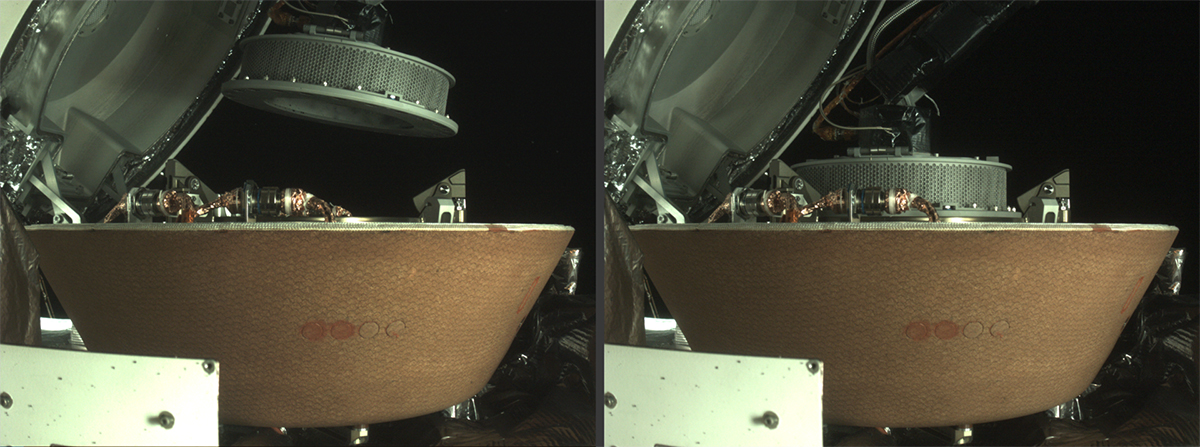OPINION
We’ve all experienced the frustration of trying to find that damned 10mm socket, but imagine working in one of the most secure labs on Earth… and realising that you’ve got the wrong toolkit entirely. A cornucopia of scientific revelation lies before you – and you can’t open it.
This is the frustration facing NASA scientists as they eagerly await the opening of the OSIRIS-REx capsule.
The capsule is the culmination of the OSIRIS-REx mission, launched in 2016. Across four billion miles of space, the probe rendezvoused with the asteroid Bennu, thought to be a fragment of cosmic rubble left over from the Solar System’s formation. In an extraordinary touch-and-go, the probe’s extended arm scooped up some of the asteroid’s surface material. That material was then stored in a tightly sealed container, which shot its way back to Earth.
After crashing safely back on Earth last month, the capsule was retrieved and taken back to the lab. There, in a secure box with a nitrogen atmosphere to prevent contamination of the ancient space dust, the capsule will be opened and its precious cargo thoroughly analysed.
Eventually.
Also to prevent contamination, the tools in the box had to be thoroughly sterilised as well.
The only problem is that they’re the wrong tools.
According to a NASA blog post, the curation team that’s been processing the samples says it has removed and collected 70.3 grams (2.48 ounces) of Bennu material from the capsule so far — and it hasn’t even actually been opened yet. Those 70.3 grams come from just the area on the outside (and part of the inside) of the sample collector’s head.
“The sample processed so far includes the rocks and dust found on the outside of the sampler head, as well as a portion of the bulk sample from inside the head, which was accessed through the head’s mylar flap,” the post states. “Additional material remaining inside the sampler head, called the Touch-and-Go Sample Acquisition Mechanism, or TAGSAM, is set for removal later, adding to the mass total.”
Just how much additional material is still inside the sealed capsule, no one is really sure. Because they can’t open it.
Next, the team will start tackling how to perform that task – but, according to the blog post, that might prove slightly difficult.
“After multiple attempts at removal, the team discovered two of the 35 fasteners on the TAGSAM head could not be removed with the current tools approved for use in the OSIRIS-REx glovebox,” it says. “The team has been working to develop and implement new approaches to extract the material inside the head, while continuing to keep the sample safe and pristine.”
Ironically, perhaps, it’s their singular dedication to preserving the integrity of the sample that is keeping it so far locked away.
Basically, the OSIRIS-REx scientists have many regulations in place for how to deal with the sample because it’s very important they don’t interfere with its preservation. For instance, the blog post says, all curation work is performed inside a special glove box that has a constant flow of nitrogen. Without that flow, the sample might be exposed to Earth’s atmosphere.
“While the procedure to access the final portion of the material is being developed,” the post continues, “the team has removed the TAGSAM head from the active flow of nitrogen in the glovebox and stored it in its transfer container, sealed with an O-ring and surrounded by a sealed Teflon bag to make sure the sample is kept safe in a stable, nitrogen-rich, environment.”
So, having the wrong toolkit in the carefully sealed container is a bit of a complication. A bit like storing something in a safe place where you won’t forget it – and forgetting it.
Except that there’s vastly more at stake than finding that bloody 10mm socket.
Even though OSIRIS-REx isn’t the first asteroid-sample-return mission humanity has completed – JAXA’s Hayabusa takes that title – it is the heftiest. Or, in other words, the capsule that landed in September delivered the largest-ever asteroid sample to our planet […]
Part of the reason there is so much of the Bennu sample within this capsule actually has to do with the touch-and-go process itself. When the OSIRIS-REx sample collection mechanism dipped toward the rock to gather a few asteroid pieces, scientists watching were surprised to see Bennu wasn’t a nice, solid object like you might expect. No, it was kind of malleable; when the sample collection arm made contact with the rock, shrouds of dust particles were released into the air, causing quite a scene and almost swallowing the spacecraft.
Scientists will, of course, open the capsule eventually. This is more on the scale of a minor hiccup than a catastrophic error (for instance, forgetting to convert calculations from Imperial to metric units and sending a probe crashing to its doom).
Once they do, NASA plans to share the scientific bounty.
The agency has said it will give 25 per cent of the Bennu bits to over 200 scientists at 25 different facilities, four per cent to the Canadian Space Agency and 0.5 per cent to JAXA. (NASA received about 10 per cent of the Hayabusa 1 asteroid payload from a space rock named Itokawa.) The remaining approximately 70 per cent, the team says, will be stored at Johnson Space Center to be studied for years to come, much like Apollo moon rock samples continue to be investigated decades after being brought to Earth by astronauts.
Live Science
Once they get it open, of course. Remember, boys, righty-tighty, lefty-loosey.

